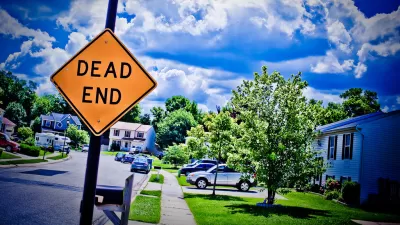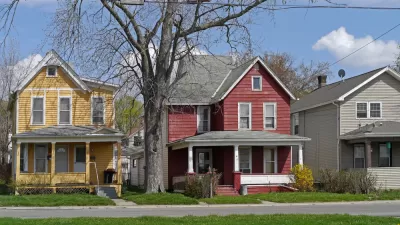Spatial analysis of income and education over time in U.S cities provides further evidence for the “New Donut” theory of the city. Wealthier and more educated residents are more likely to move to the urban core or exurbs than to inner-ring suburbs.

The riots in Ferguson, MO brought mainstream media attention to a phenomenon that has been happening slowly for the last two decades. The old conception of cities as poor, minority-dominated slums surrounded by affluent suburbs has ceased to be an accurate description for most cities. Instead, revitalized urban centers are surging in popularity.
This doesn’t signal abandonment of the suburbs, however. Newer and larger suburbs continue to be built around major metropolitan areas, accounting for most of their population growth, and leaving an inner ring of less desirable older suburbs that will be the new centers of poverty and economic stagnation.
This story has been supported by anecdotal evidence across the country, but researchers have thus far failed to provide statistical evidence. Existing research centers on population growth, but this is an inaccurate gauge of the desirability and economic vitality of an area that has already been urbanized. In fact, a surge in popularity often attracts wealthier residents with smaller household sizes, which may reduce total population.
Instead, Luke Juday looks at income and education as an indicator of who lives in different zones. He looks at four major metropolitan areas: Charlotte, Atlanta, Denver, and Houston. Each is roughly geographically symmetrical and has a single clear city center, making them likely to represent the donut shape. They are also experiencing significant growth, have relatively low housing prices, and have few unique land use restrictions that might distort migration trends.
The results are striking. In 1990, each city had something close to a "hump" graph. Low rates of education and income in the city center gave way to high rates in the suburbs and then fell again in rural areas. Today, this has turned into an "S-curve," with high rates of education and income in the core, low rates several miles outside of it, and high rates in more distant suburbs.
FULL STORY: A funny thing is happening in many US cities

Study: Maui’s Plan to Convert Vacation Rentals to Long-Term Housing Could Cause Nearly $1 Billion Economic Loss
The plan would reduce visitor accommodation by 25,% resulting in 1,900 jobs lost.

North Texas Transit Leaders Tout Benefits of TOD for Growing Region
At a summit focused on transit-oriented development, policymakers discussed how North Texas’ expanded light rail system can serve as a tool for economic growth.

Why Should We Subsidize Public Transportation?
Many public transit agencies face financial stress due to rising costs, declining fare revenue, and declining subsidies. Transit advocates must provide a strong business case for increasing public transit funding.

How to Make US Trains Faster
Changes to boarding platforms and a switch to electric trains could improve U.S. passenger rail service without the added cost of high-speed rail.

Columbia’s Revitalized ‘Loop’ Is a Hub for Local Entrepreneurs
A focus on small businesses is helping a commercial corridor in Columbia, Missouri thrive.

Invasive Insect Threatens Minnesota’s Ash Forests
The Emerald Ash Borer is a rapidly spreading invasive pest threatening Minnesota’s ash trees, and homeowners are encouraged to plant diverse replacement species, avoid moving ash firewood, and monitor for signs of infestation.
Urban Design for Planners 1: Software Tools
This six-course series explores essential urban design concepts using open source software and equips planners with the tools they need to participate fully in the urban design process.
Planning for Universal Design
Learn the tools for implementing Universal Design in planning regulations.
City of Santa Clarita
Ascent Environmental
Institute for Housing and Urban Development Studies (IHS)
City of Grandview
Harvard GSD Executive Education
Toledo-Lucas County Plan Commissions
Salt Lake City
NYU Wagner Graduate School of Public Service




























